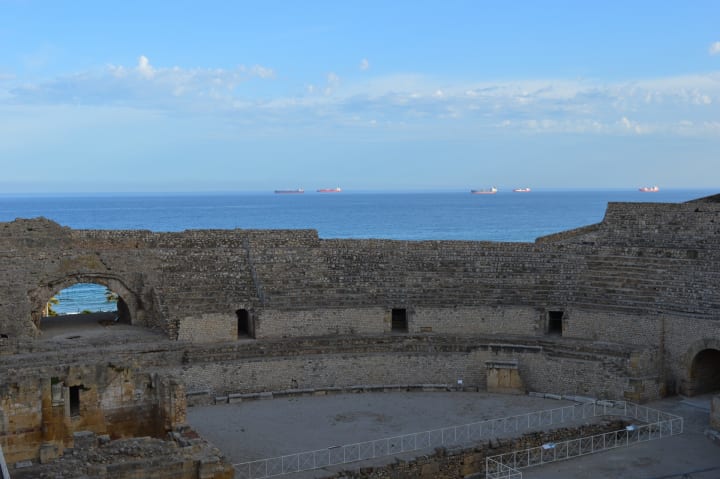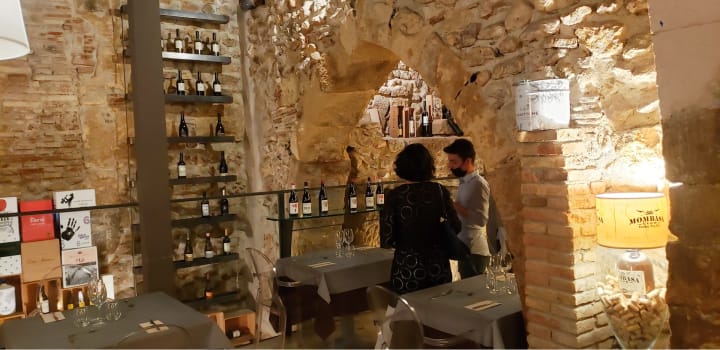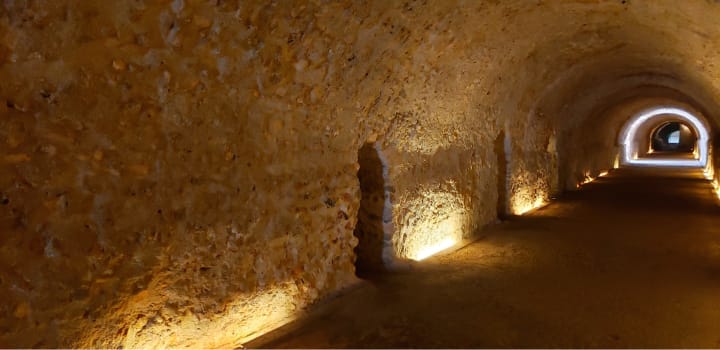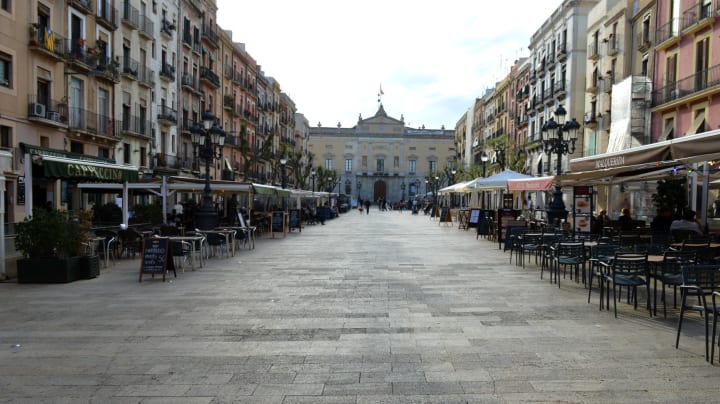When in Tarragona, Do as the Romans Do
Friends, Romans, countrymen, lend me your eyes for one of the most important Roman cities in Iberia

Fourteen thousand spectators are baying for blood as a gladiator stands over his defeated adversary. All eyes are fixed on Emperor Augustus. He stands with slow majesty, smooths down his white toga and lifts his right arm outwards. His hand is fisted, his thumb extended horizontally. He twists it up and then down a little. Teasing us.
The crowd goes wild, shouting out their choices. Mostly it’s for death. The Emperor smiles a haughty grin and surveys his subjects. The shouts subside and a buzz of excited voices floats above the arena like the rising sound of swarming hornets.
Augustus twists his thumb down. Death. The gladiator raises his sword above his head, it wavers a second before crashing down.
I, Alexus Markhamus and my wife, Alexandras, are regular attendees at the games and I can tell you that this only happens in the movies. Gladiators are far too expensive to train for the fight promoters to allow them to be killed off all the time.
Many gladiators retire to live long and happy old ages growing olives and drinking wine. Not exactly an action-packed movie but a far more pleasant outcome.
The Amphitheatre

Tarragona Amphitheatre is in a stunning location overlooking the Mediterranean. Unfortunately, these days you can’t enter due to its fragile state.
During the Middle Ages, the locals used it as a quarry for their buildings and then some bright spark decided to build a church in the middle. The church ruin can be seen to the left of the picture above. It’s not as if there’s a lack of space in Spain that you need to damage beautiful historic buildings to build something else.
The Old Town (Part Alta)
Tarragona sits on the coast 100 km/60 miles south of Barcelona. Alejandra and I drove our chariot the two and a half hours north of our adopted home in Valencia.
Tarragona was one of the most important cities in the Empire and the town has many reminders of its Roman heritage.
The old town is called Upper Part, or Part Alta in Catalan. It’s mainly medieval but surrounded by restored Roman walls. Inside the walls, the memories of Roman times persist in the layout, building materials and ruins. Roman stones were often repurposed to construct medieval homes.

Here we can see a shopfront in the Upper Part that used old Roman arches in its construction.

Here’s a restaurant in a former medieval house constructed from Roman materials. You can see the thin Roman bricks on the far left and Roman arch stones above Alexandras and Restaurantus Managerus.

Tarragona Circus
The Circus is a racetrack stadium and we’re among 30,000 spectators sitting on the terraces in the sun. This time we’re baying for our favourite rider because we’re watching the chariot races.

It’s free to enter the Circus for the races because they’re financed by the rich folks — it makes them feel important. I’m not complaining.
Alexandras and I lost 20 denarii on a race bet, that’s the last time I put any money on the chariot racer Uselus Charioteerus. We’re not too upset because there are lots of bars and restaurants in the vaults below us. We’ll go there at halftime. There’s also a nice cool sea breeze blowing up my toga.


Time-travelling 2,000 years forward to the present time, and trying to shake off the effects of too much Roman wine at halftime, we can see much of the Circus is now hidden under modern buildings.
Here’s a side section of the Circus surrounded by newer buildings that cover the rest.

The main square and Town Hall are built over the western section of the Circus, following its lines exactly. Beneath these modern buildings, the Roman Circus remains are hidden. As is my chariot; it’s in the underground chariot park directly below the square.

The paved square covers the old racetrack. The buildings on either side are on top of the Circus terraces and the Town Hall, seen at the end of the photo, was built over the other turn on the Circus.
The Roman Wall
I’m a stonemason and I am working on building the northern section of the wall. It’s Monday morning and I have a hangover from too much wine yesterday at the Circus. But at least there’s still a nice cool sea breeze blowing up my toga.
The wonderful climate was the reason Emperor Augustus chose this location. He’s a little weak of body so can’t spend time in cold or damp places.

Unlike the barbarians in Gaul and Britain, who are not keen on having central heating and straight roads imposed on them, the locals here are not bothered. It’s nice not to have spears thrown at you while you work.
The locals are fishing people and they think we’re crazy for building a city on top of a hill which makes it hard to walk home after a day’s fishing.
The head of the building work, Chiefus Architectus, told them we need the fortified city to guard against the Carthaginians. The locals laughed, they’d never seen a Carthaginian in Tarragon. To be fair, we never did either but you can never be too careful.
Besides, a stonemason is a well-paid job in Roman Spain so I’m not going to say anything. And the wine and food are wonderful here.
A Roman Holiday
Most Spanish cities and towns seem to have a medieval old town but few have so many older Roman influences. Tarragona is a UNESCO protected site but also provided the base for excursions to the medieval walled town of Montblanc, the Palaeolithic Caves of L’Espluga and the Roman Aquaduct outside the town. But that’s all for a future post.
In the meantime, as my Roman friend Gaius Plinius Secundus is fond of saying— In Vino Veritas — Truth in wine. How wise.
This article first appeared at medium.com.
About the Creator
Alex Markham
Music, short fiction and travel, all with a touch of humour.






Comments
There are no comments for this story
Be the first to respond and start the conversation.